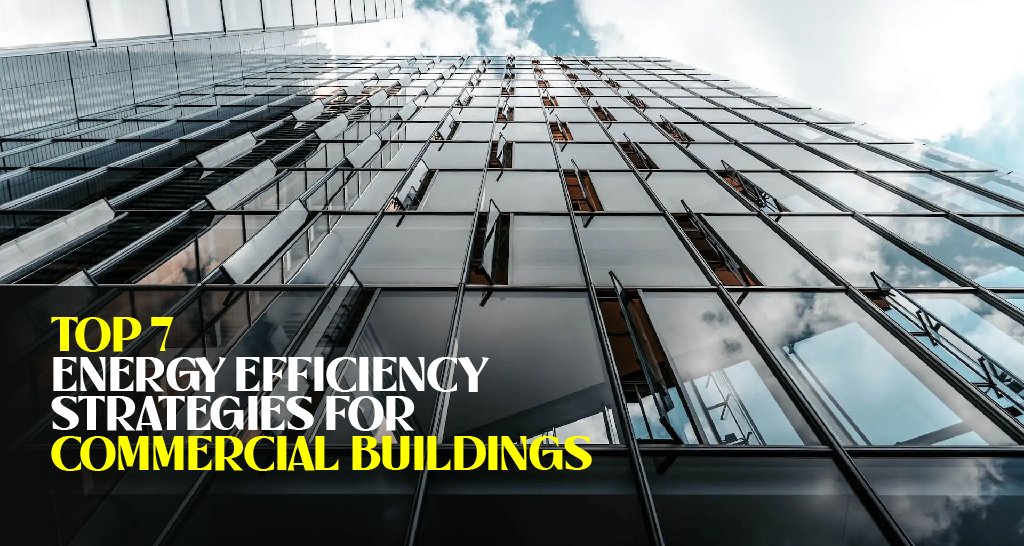Energy efficiency in commercial buildings is a critical concern today, where environmental sustainability and cost management are paramount. As businesses seek ways to reduce their carbon footprint and operational expenses, implementing effective energy efficiency strategies has become essential. These strategies contribute to environmental conservation and offer significant financial benefits through reduced energy costs.
But how exactly can this be achieved? Relax, we’ve got you covered!
In this article, we have enlisted five practical and impactful ways you can try to enhance the energy efficiency of your commercial property. Whether you are a small business owner or manage a large commercial facility, these tips will guide you toward more sustainable and cost-effective operations.
Let’s get started…
-
Implementing Thermal Barriers
Implementing thermal barriers is a key strategy for enhancing energy efficiency in commercial buildings. These barriers, typically consisting of insulating materials like foam or fiberglass, are crucial in minimizing heat transfer, thus maintaining a consistent indoor climate. This reduces the load on heating and cooling systems and leads to significant cost savings.
However, the effectiveness of a thermal barrier greatly depends on its proper installation. Therefore, it is essential to hire professionals who can provide effective and efficient solutions for a building’s interior and exterior.
-
Upgrading to Energy-Efficient HVAC Systems
Investing in modern, high-efficiency heating, ventilation, and air conditioning (HVAC) systems is one of the most effective strategies for reducing energy consumption in commercial buildings. Newer HVAC technologies are designed to operate more efficiently, using less energy to provide the same comfort level.
Consider systems with features such as variable-speed drives, energy recovery ventilation, and smart controls to optimize performance. Regular maintenance ensures these systems operate at peak efficiency, encompassing tasks like filter replacement and cleaning. By doing so, businesses can achieve precise temperature control while curbing energy expenditure.
-
Utilizing LED Lighting
Switching to LED lighting is a key strategy for energy efficiency in commercial buildings. LED lights consume significantly less energy than traditional incandescent or fluorescent bulbs, reducing electricity costs and environmental impact. They have a longer lifespan, reducing maintenance costs.
LEDs also offer customizable lighting options and instant illumination, providing a more responsive and efficient lighting system. Beyond energy savings, the absence of hazardous materials in LED lights makes them environmentally friendly. So, why wait?
-
Use Modular Construction Methods
Employing modular construction methods offers numerous advantages for building projects. This innovative approach involves constructing sections or modules off-site and assembling them on-site. Modular construction enhances efficiency, as multiple modules can be produced simultaneously, accelerating project timelines. It often results in cost savings due to reduced labor and material expenses. Quality control is improved in factory-like settings, ensuring consistency in construction.
Additionally, the reduced environmental impact stems from minimized waste and resource consumption. The versatility of modular construction makes it suitable for various building types, from residential to commercial structures. Embracing modular methods streamlines construction processes and aligns with sustainable and cost-effective practices in the modern building industry.
-
Increase Natural Lighting
Maximizing natural lighting in buildings is a simple yet effective strategy with numerous benefits. Designing spaces to harness natural sunlight reduces reliance on artificial lighting, leading to significant energy savings. This not only lowers electricity costs but also aligns with sustainability goals by reducing the carbon footprint.
So, incorporate large windows, skylights, and open floor plans to enhance the penetration of natural light. This will create a brighter and more inviting environment, directly increasing occupant well-being, productivity, and overall satisfaction.
-
Weatherize Doors and Windows
Weathering doors and windows is a key strategy for improving building energy efficiency. By sealing gaps and addressing drafts around doors and windows, you can prevent the infiltration of outside air and the escape of conditioned air. This helps maintain a more stable indoor temperature, reducing the workload on heating and cooling systems.
This simple yet impactful step can enhance energy efficiency and contribute to cost savings by lowering heating and cooling expenses.
-
Energy Efficiency Audits
Lastly, conducting energy efficiency audits is a crucial step in optimizing a building’s performance. These audits involve a comprehensive assessment of energy consumption, identifying areas for improvement.
The data collected from audits informs targeted strategies for reducing waste and improving sustainability. Regular energy efficiency audits contribute to immediate energy savings and enable continuous optimization over time. Embracing this proactive approach ensures that commercial buildings operate at peak efficiency, aligning with environmental goals and long-term cost-effectiveness.
-
Wrapping Up
Implementing these strategies can lead to a more energy-efficient commercial building. This not only reduces environmental impact but also translates into significant cost savings over time. With the growing importance of sustainability, adopting these measures is a step towards a greener, more responsible future.
So, why wait? Implement them today.

